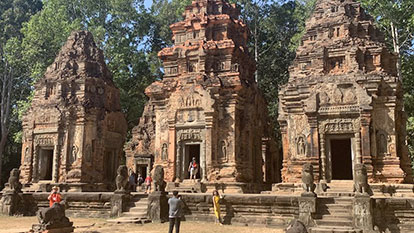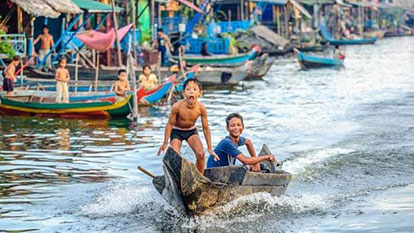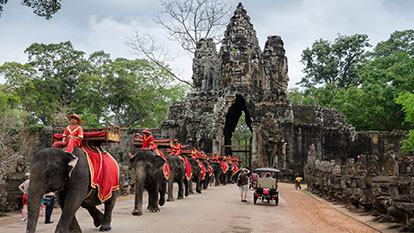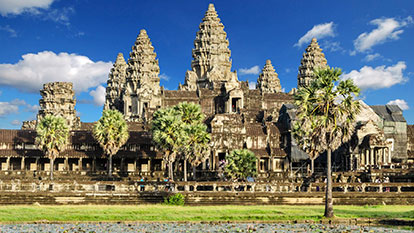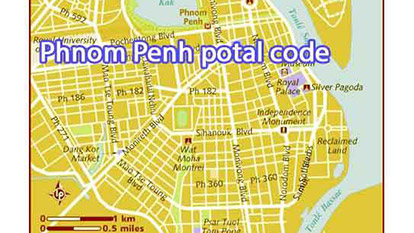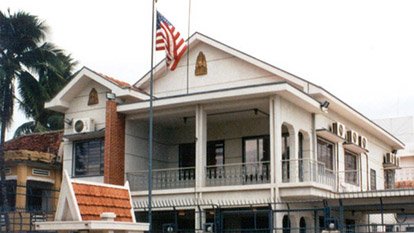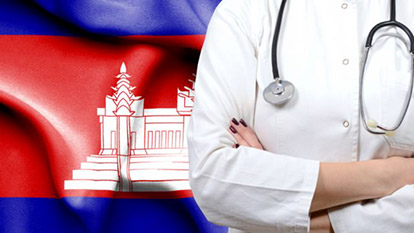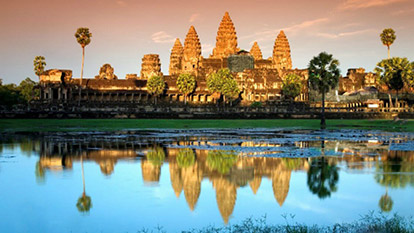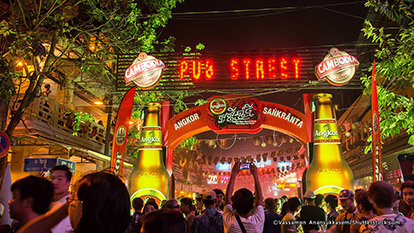Cambodia Geography
Cambodia is a geographically diverse country in Southeast Asia, bordered by Thailand, Vietnam, Laos, and the Gulf of Thailand. Spanning approximately 181,035 square kilometers, its landscape ranges from rolling plains to towering mountains. Cambodia geography offers an intriguing blend of natural beauty and cultural history, making it an ideal destination for travelers. With Galatourist, a trusted local travel agency in Cambodia, you can explore this rich Cambodia travel map, uncovering hidden gems like the Mekong River, Tonle Sap Lake, and the Cardamom Mountains—where nature and history intertwine perfectly.
The Mekong River and Tonle Sap Lake
The Mekong River and Tonle Sap Lake are two of Cambodia’s most critical geographical features, playing essential roles in the country’s ecosystem and supporting the livelihoods of many Cambodians. The Mekong River, flowing from north to south, is the lifeblood of Cambodia's agricultural industry. Every year, monsoon rains cause the river to swell, depositing nutrient-rich sediment across the surrounding plains, which creates fertile land ideal for farming. Besides agriculture, the Mekong is a key transportation route and sustains a large portion of Cambodia’s fishing industry.
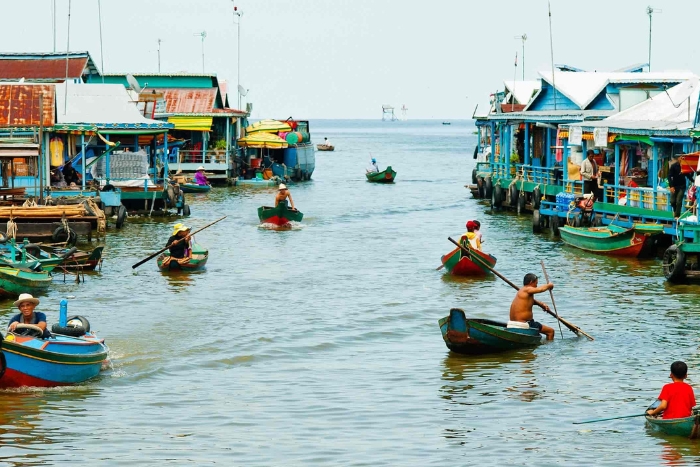
Tonle Sap Lake, the largest freshwater lake in Southeast Asia, is equally vital to Cambodia. Its unique feature is its seasonal flow reversal, driven by the Mekong's rising waters during the rainy season (May to October). This phenomenon causes the lake to expand dramatically, from 2,500 square kilometers to over 16,000 square kilometers. This expansion creates vast floodplains, transforming Tonle Sap into one of the most productive inland fisheries in the world, upon which over 40% of the country’s population relies.
As the rainy season ends and water levels drop, Tonle Sap drains back into the Mekong, helping regulate water levels and prevent downstream flooding in the Mekong Delta. This natural cycle is crucial not only for fishing but also for agriculture, as the floodwaters deliver essential nutrients to rice paddies and other crops. The lake’s rich biodiversity, which includes hundreds of fish species and rare bird populations, further underscores its ecological significance.
For travelers eager to explore these natural wonders, Galatourist, a leading Cambodia travel agency, offers valuable insights and experiences. Understanding the role of these waterways is essential for any traveler interested in Cambodia geography and looking for authentic Cambodia travel tips.
Mountain Ranges and Highlands
Cambodia is home to several notable mountain ranges, which not only add scenic beauty but also offer rich biodiversity and eco-tourism opportunities. To the southwest, the Cardamom Mountains rise to over 1,500 meters, forming one of Southeast Asia’s largest and most important rainforest ecosystems. This region, which includes Phnom Aural (the highest peak in Cambodia at 1,771 meters), serves as a vital sanctuary for wildlife, including rare species of elephants, tigers, and various birds. The dense rainforest here makes it an ideal destination for eco-tourists and wildlife enthusiasts.
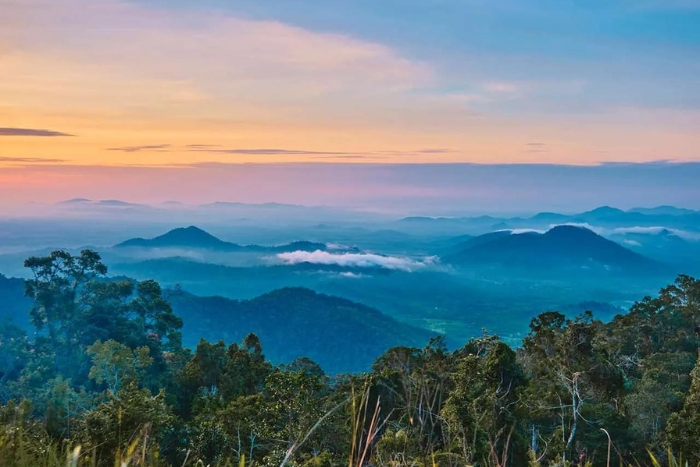
The Elephant Mountains, an extension of the Cardamom range, stretch toward the south and southeast, with elevations between 500 and 1,000 meters. These mountains are bordered by a narrow coastal plain facing the Gulf of Thailand, providing diverse landscapes ideal for adventurous travelers seeking both mountains and beaches.
To the north, the Dangrek Mountains serve as a natural boundary between Cambodia and Thailand. These steep cliffs overlook the Korat Plateau and rise to elevations of around 700 meters. The mountains offer rugged terrain and untouched wilderness, making them a fascinating area for hiking and exploration.
The Ratanakiri Plateau and Chhlong Highlands in the northeast are relatively remote and sparsely populated, offering even more opportunities for eco-tourism. These highlands merge with Vietnam's Central Highlands, forming a vast area of rolling hills and forested landscapes that are perfect for those looking to explore Cambodia's less-traveled regions .
For travelers looking for detailed itineraries and eco-tourism adventures, Galatourist, your trusted Cambodia travel agency, can guide you through these mountain ranges. Whether you are curious about Cambodia geography or searching for where to visit in Cambodia, these mountain ranges provide an excellent backdrop for exploration.
Cambodia’s Coastline and Islands
Cambodia boasts a 443-kilometer-long coastline along the Gulf of Thailand, with over 60 tropical islands offering pristine beaches and lush landscapes. Popular destinations like Sihanoukville and Koh Rong attract visitors with their white-sand beaches and crystal-clear waters, making them ideal spots for relaxation, snorkeling, and diving. Koh Rong, known for its long stretches of untouched shoreline such as Long Beach, is perfect for those seeking seclusion and natural beauty. Another notable spot is Koh Rong Samloem, home to Saracen Bay, a peaceful haven for visitors looking for quieter, laid-back beaches.
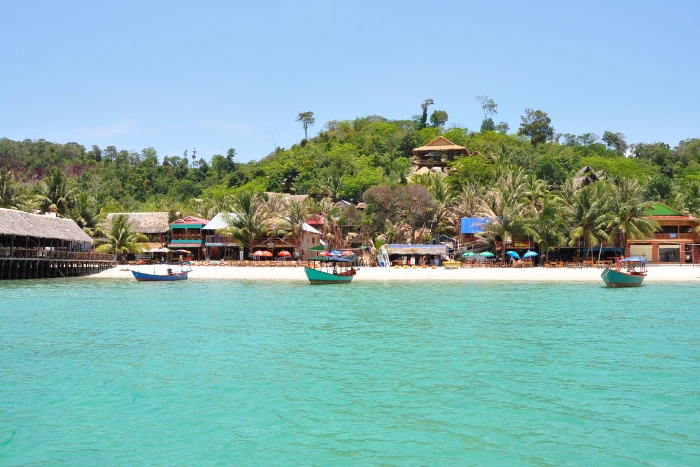
The mangrove forests along the coastline further enhance Cambodia's biodiversity, offering unique ecological experiences. Otres Beach in Sihanoukville, with its nearby markets and beachside activities, remains a favorite for both locals and international tourists. Kep Beach and Rabbit Island (Koh Tonsay), located closer to Vietnam, provide a more remote, tranquil experience while offering fresh seafood and stunning views.
For travelers seeking advice on where to visit in Cambodia or looking for a local Cambodia travel guide, Galatourist offers comprehensive insights into the best beaches and coastal areas. Exploring the coastline gives you a glimpse of the diverse Cambodia lifestyle while enjoying the best of nature's offerings.
Cambodia Climate
Cambodia’s low-lying central plains form approximately 75% of the country, making them critical to its agricultural economy, particularly rice farming. These plains, rich in sediment deposits from the Mekong River, are irrigated by seasonal monsoon rains, creating vast rice paddies that support the country's primary food source. In addition to rice, other crops such as corn, sesame, and tobacco are cultivated, contributing to the nation’s agricultural diversity.
Cambodia's tropical monsoon climate significantly influences these agricultural cycles. From May to October, the southwest monsoon brings heavy rains and floods the Mekong and Tonle Sap basins, nourishing the plains. The dry season, from November to April, sees temperatures rising to as high as 38°C, making March and April the hottest months. The average annual temperature ranges between 25°C and 28°C, which supports year-round farming, particularly in areas equipped with irrigation.
Despite its rich natural resources, Cambodia faces environmental challenges such as deforestation and illegal logging. These activities have reduced the country’s forest cover, threatening biodiversity. Conservation efforts, including the establishment of national parks and protected areas, are helping to preserve Cambodia's forests, especially in the Cardamom Mountains. These regions, along with the coastal mangrove forests, remain biodiversity hotspots. These efforts are crucial for balancing economic development with environmental sustainability.
For travelers exploring Cambodia geography and seeking eco-tourism adventures, Galatourist offers insights into sustainable travel while showcasing the country’s diverse landscapes and agricultural heritage.
Conclusion
For those planning a trip with Galatourist, a trusted Cambodia travel agency, the country’s diverse geography provides numerous travel opportunities. From exploring the Mekong River and Tonle Sap Lake, to trekking through the Cardamom Mountains or relaxing on the beaches of the Gulf of Thailand, Cambodia offers an array of experiences that highlight its unique natural beauty. Whether you're an adventure seeker, a nature lover, or simply looking to immerse yourself in the country’s rural charm, Cambodia’s geography ensures that your journey will be both scenic and memorable.
---
See more:
Other travels guides:
Sincerely yours & see you soon!
GALATOURIST since 2005.
Testimonials

Ms. Francesca Tronconi & Mr Vizzolini Davide (2pax) from Spain

Mrs & Mr. DUPUIS (2pax) from United States

Mr. Jeffrey Szymanski (2pax) from United States

Mrs Rosemary McGuinness (2pax) from Australia

Mrs Elena Maria Sanchez (2pax) from Spain

Group Marissa (4pax) from United States

Mr Jerzy (2pax) from Canada





